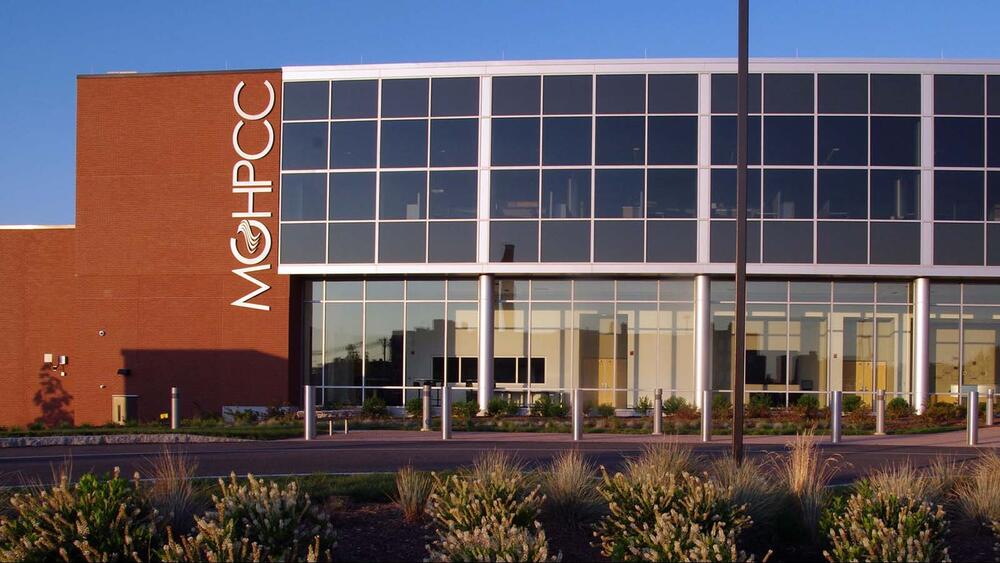
Mass Live article reports the many developments afoot at the MGHPCC.
Read this story at Mass Live
HOLYOKE – The AI revolution is arriving in Holyoke.
Stacked aluminum trays wait to be hung and filled with overhead cables. Spools of brightly colored data lines sit ready to be threaded through the facility.
Pipes will be welded together to carry vital cooling water to the new computers.
This local artificial intelligence revolution includes the technicians – union electricians and others – already working to install the equipment in an empty portion of the Massachusetts Green High Performance Computing Center at 100 Bigelow St., says John Goodhue, executive director of the computing center for the entirety of its 12-year existence.
“It’s a really interesting time,” Goodhue said. “AI is making changes. The demand for commuting power is increasing.”
And the computing center is expanding with it.
In December, Gov. Maura Healey launched the Massachusetts AI Hub at the computer center and expanded access to sustainable high-performance computing. This partnership will involve joint investments by the state of Massachusetts and partner universities. That investment is expected to top $100 million over the next five years as it scales up, the state has said.
The center issued an request for proposals last month requesting information related to procurement and operation of a large scale AI Computing Resource. The project is expected to advance in three phases — by August, in January 2027 and in August 2028.
In a related development, the center and its Boston-based partner, QuEra Computing, plan to build a $16 million quantum computing complex in Holyoke over the next two years.
Massachusetts is believed to be the first state to back a quantum computing project. Controlled by lasers, the planned Quantum Computing Complex will operate by “puffing up” atoms to thousands of times their normal size and complete calculations at speeds far exceeding conventional computer processors.
John B. Cook, president of Springfield Technical Community College, said quantum computing, as an underlying technology, improves machine learning and AI.
“Quantum is really a step forward that will further optimize AI,” he said.
The state’s most recent economic development bond bill included $40 million to boost quantum computing in Springfield and Western Massachusetts.
“The reason STCC is involved is because of a workforce component,” Cook said. “Where will those workers come from?”
STCC has long operated a center on photonics, in which students study light, lenses and lasers, a pursuit that developed out of longtime area industries.
Goodhue said area community colleges do a wonderful job setting up internship programs at the Holyoke center. Students learn while at the center and receive valuable training for jobs, sometimes at the center, or elsewhere.
The center, which opened in 2012, is a joint venture of Boston, Harvard, MIT, Northeastern and Yale universities and the University of Massachusetts system. Academics at other institutions, like Amherst College, also use the center.
Researchers from those universities and their partners around the globe harness computing power equal to hundreds of thousands of laptop computers to perform millions of experiments each month. Their work is said to advance understanding in areas such as climate, energy, medicine, materials, health, space and computing itself.
Research examples include analyzing the gut microbiome and studies of how galaxies are formed.
The Large Hadron Collider at CERN in Switzerland uploads terabytes of data to computers at the Holyoke center every week, Goodhue said.
Scientists are using data from the collider, the world’s largest particle accelerator, to study the origins of the universe.
At the center today, one of its operational concerns involves how to get 5 megawatts of electricity into the building in Holyoke’s historic Flats neighborhood and how to get rid of the heat that electricity generates as it passes through computers.
“All the energy that comes in has to get out,” Goodhue said.
That’s one of the main reasons the facility is in Holyoke. The city relies on clean hydropower from Holyoke Gas & Electric, a legacy of the Paper City’s industrial past.
HG&E operates a quarter-megawatt generator in a small brick building just off the computing center’s parking lot.
The center uses water from a system originally designed for the thirsty textile and paper mills that once stood on the city’s canal banks.
“When we were considering the sites, we asked if they had the capacity,” Goodhue said. “They said, ‘You’re a pipsqueak compared to a paper mill.’”
Goodhue cites Moore’s Law – the observation that computing power that can be crammed into a given space doubles every two years.
The acre-sized computer room on the center’s second floor is deafeningly loud with fans and pumps. Visitors – and there are few, with photos forbidden – are offered foam earplugs at the entrance.
Racks holding computers are arranged in big rectangles with a door leading to a small corridor through the inside. There is room for one or two people to work, no more.
Doors to the interior carry names and logos of the universities or research teams using a particular bank of computers.
The space is noticeably warmer than the cubicle-filled office just outside. Those workspaces offers floor-to-ceiling windows and sweeping views of the canal-side neighborhood and of construction for the rehab of the old Farr Alpaca Mill just across the upper level canal. The old mill will soon be 88 apartments.
Aaron Vega, Holyoke’s director of planning and economic development, said the center has been a good neighbor.
He said the center’s team welcomes visits by developers coming into the city. Those are people, Vega said, who “want to know about the center and they continue to be part of the story we use to attract continued development in the area.”
Goodhue said the center is highly automated, with only about a dozen employees on site. Hundreds more use the center, but mostly from their campuses and only come to the center occasionally to work on the equipment.
Activity will increase, he said, with the new developments.